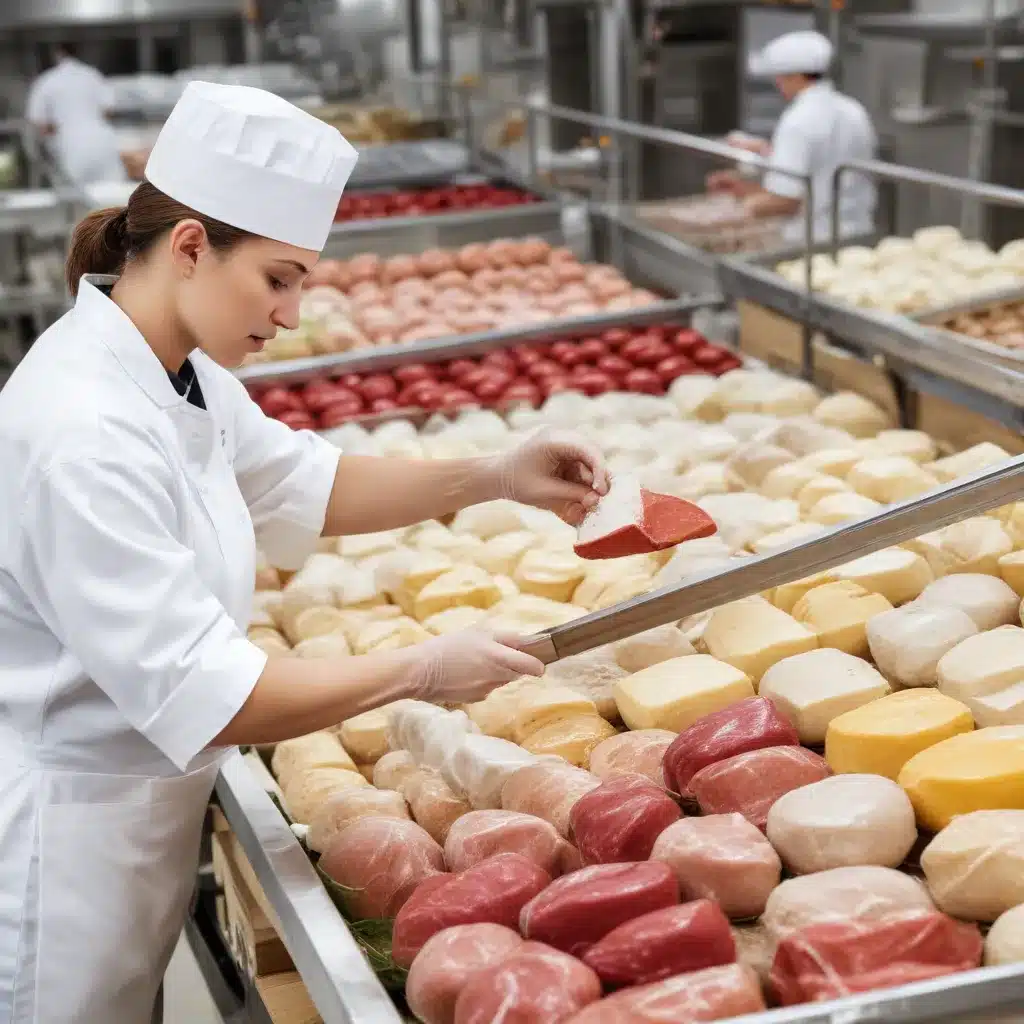
Understanding Cross-Contamination
Cross-contamination is the transfer of harmful bacteria from one surface, object, or person to food. This can happen when raw meat, poultry, eggs, or seafood come into contact with ready-to-eat foods, clean utensils, or food preparation areas. Improper handling of raw ingredients is a leading cause of foodborne illness, which sends an estimated 128,000 Americans to the hospital each year.
As seasoned culinary professionals, we must be vigilant about preventing cross-contamination in the kitchen. Bacteria that cause foodborne illnesses, such as Salmonella, E. coli, and Listeria, can be invisible to the naked eye. This means they can easily spread and contaminate other foods without your knowledge, putting you and your loved ones at risk.
In this comprehensive guide, we’ll explore practical strategies for minimizing the threat of cross-contamination when handling raw ingredients. From proper handwashing techniques to sanitizing surfaces and utensils, you’ll learn essential food safety practices to keep your kitchen clean and your meals safe.
Handwashing: Your First Line of Defense
Proper handwashing is the most effective way to prevent the spread of harmful bacteria in the kitchen. Wash your hands with warm, soapy water for at least 20 seconds:
- Before and after handling food: This includes raw meat, poultry, eggs, and seafood, as well as ready-to-eat items.
- After using the bathroom: Germs can easily transfer from your hands to food if you don’t wash up.
- After changing diapers or caring for a sick person: These activities can expose your hands to illness-causing bacteria.
- After blowing your nose, sneezing, or coughing: Respiratory droplets can carry harmful microbes.
- After handling pets or their equipment: Animals can inadvertently spread bacteria around your kitchen.
Following these handwashing guidelines is crucial to stop the chain of cross-contamination. By washing your hands thoroughly and often, you can prevent the unintentional spread of foodborne illness-causing pathogens.
Separating Raw and Ready-to-Eat Foods
One of the most important steps in preventing cross-contamination is keeping raw ingredients separate from cooked or ready-to-eat foods. When shopping, place raw meats, poultry, eggs, and seafood in plastic bags to prevent their juices from dripping onto other items in your cart.
Upon arriving home, store raw ingredients on the bottom shelf of your refrigerator, below ready-to-eat foods. This prevents any leakage or drips from contaminating other items. Use separate cutting boards, utensils, and prep surfaces for raw and cooked foods. Wash these items thoroughly with hot, soapy water after each use.
When grilling or cooking, never use the same platter, tongs, or other tools for raw and cooked meats. This risk of cross-contamination is high, as any bacteria present on the raw item can easily transfer to the fully cooked food, potentially causing illness.
Cleaning and Sanitizing Surfaces and Utensils
Proper cleaning and sanitizing of your kitchen surfaces and tools is essential for reducing cross-contamination risks. Start by thoroughly cleaning all areas that have come into contact with raw ingredients using hot, soapy water. This includes cutting boards, knives, countertops, and even your kitchen sink.
After cleaning, you’ll want to sanitize these surfaces to kill any remaining harmful bacteria. An effective homemade sanitizer can be made by mixing 1 tablespoon of unscented liquid chlorine bleach with 1 gallon of water. Pour this solution over your clean surfaces and let it sit for several minutes before rinsing.
For an extra layer of protection, you can also disinfect high-touch areas like door handles, light switches, and faucets using a disinfecting product approved for food preparation surfaces. Just be sure to follow the manufacturer’s instructions carefully, as disinfectants should never be used directly on utensils or cutting boards that will contact food.
The dishwasher can also be an effective way to clean and sanitize your kitchen tools, as long as they are made of non-porous materials like plastic, glass, or sturdy wood without cracks. The high heat of the dishwasher cycle helps eliminate any lingering bacteria.
Washing Produce: A Delicate Balance
Washing fresh fruits and vegetables under running water is an important step to remove any dirt, debris, or potential contaminants. However, it’s crucial to avoid using detergents, soaps, or commercial produce washes, as these can leave behind harmful residues. Stick to plain tap water and, for produce with firm skins, use a clean produce brush to scrub away grime.
When preparing produce, be sure to wash your hands, clean and sanitize all surfaces and utensils first. This prevents cross-contamination from raw meats, poultry, or seafood that may have been handled in the same area. Cut away any damaged or bruised portions, as these can harbor harmful bacteria.
If you purchase pre-washed, ready-to-eat produce, there’s no need to wash it again. In fact, rewashing these items could increase the risk of cross-contamination. Just be sure to store and handle them carefully to avoid any accidental introduction of pathogens.
Staying Informed and Vigilant
Preventing cross-contamination requires ongoing vigilance in the kitchen. Stay up-to-date on the latest food safety guidelines and recommendations from reputable sources like the United States Department of Agriculture (USDA) and the Food and Drug Administration (FDA).
The Kitchen Warrior blog is an excellent resource for culinary professionals seeking in-depth insights and practical tips on food handling, kitchen organization, and safe cooking practices. By following the strategies outlined in this article and staying informed, you can confidently minimize the risk of cross-contamination and serve delicious, worry-free meals to your loved ones.


